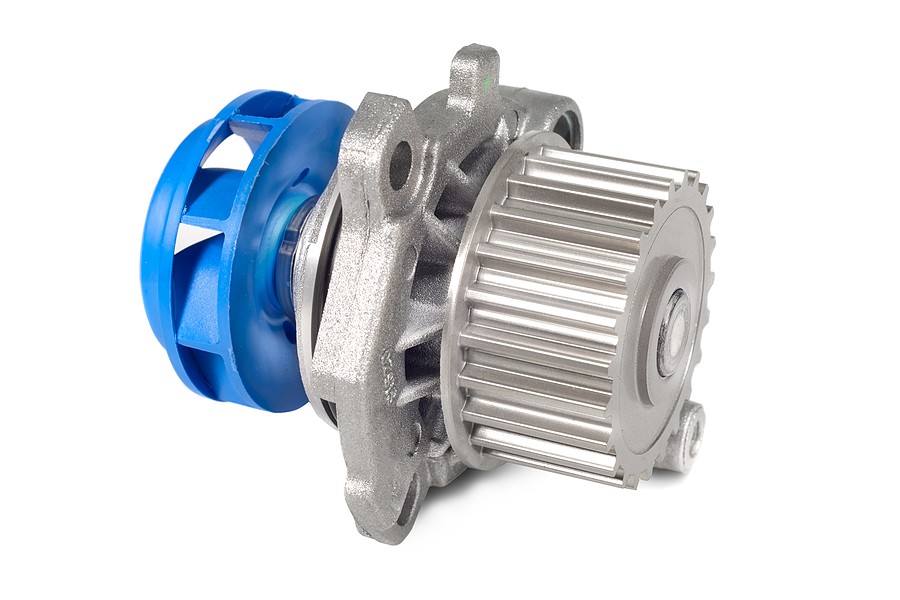The water pump is an integral part of your car's cooling system. It pumps water through the engine to keep it cool, which is especially important if you're driving in hot weather or hills.
The pump has a finite life span and eventually needs to be replaced with a new one. However, the question of when you need to replace your water pump isn't as simple as it seems – many factors go into making this decision!
This article provides you with 8 common signs of a faulty water pump. Once you notice any of these signs, you'll need to replace the water pump immediately.
What is the water pump, and what does it do?
The water pump is an integral part of your car's cooling system. It pumps water through the engine to keep it cool, which is especially important if you're driving in hot weather or hills.
A faulty water pump can lead to several overheating and eventual engine failure. So you must replace your water pump if you notice any of the symptoms listed below.
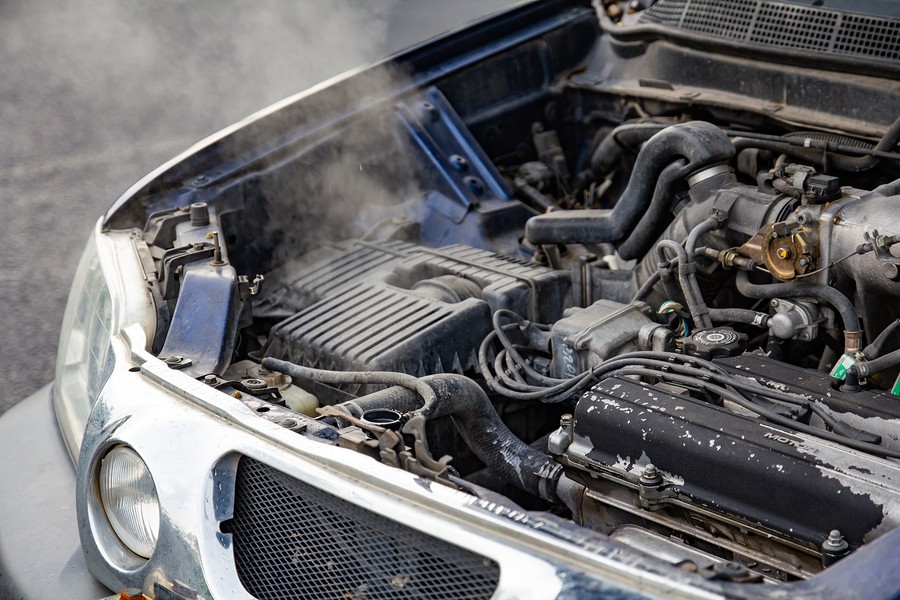
Signs of a faulty water pump
The symptoms of a faulty water pump are pretty easy to spot. Some examples include:
1) You see coolant leaking from your vehicle
this is especially common if it's leaking near the front or underneath your car.
If you see coolant leaking in any of these areas, there is a good chance that your water pump is faulty.
2) You notice the temperature gauge rising when driving
One of the reasons for this symptom is that there isn't enough coolant to keep the engine running – but another reason could be because the water pump isn't circulating coolant through the engine.
3) The water pump makes a grinding noise when running
this is especially common if the bearings are worn or damaged.
Bearings go bad as part of the natural wearing process, but they will become worse over time and eventually need to be replaced – which means that you'll need to replace your water pump.
4) There is a leak from the area of the water pump
A leak here means that there's a good chance your water pump has sprung a hole.
You can test this by putting some food coloring in your radiator and waiting for it to show up in the expansion tank – if you see colored water, it means that your entire radiator will need to be replaced.
5) Your car starts overheating
One of the most obvious signs that your water pump is faulty is when your vehicle's temperature gauge goes into the red zone.
Remember, if you see this happening, pull over and turn off your car as quickly as possible! If you keep driving with a faulty water pump, you could cause significant engine damage.
6) You notice a puddle of coolant on the ground
If you see a large puddle of green or orange-colored liquid under your car, there's a good chance that it's leaking from the water pump. In this situation, you'll need to have your entire radiator replaced as well.
7) The belt is slipping
If the belt isn't rotating correctly, it could mean that your water pump is faulty and needs to be replaced.
8) There's a leak from the area of the radiator or hoses
If you notice a puddle under your car and it seems to be coming from the radiator or hoses, this could be a sign that your water pump has gone bad.
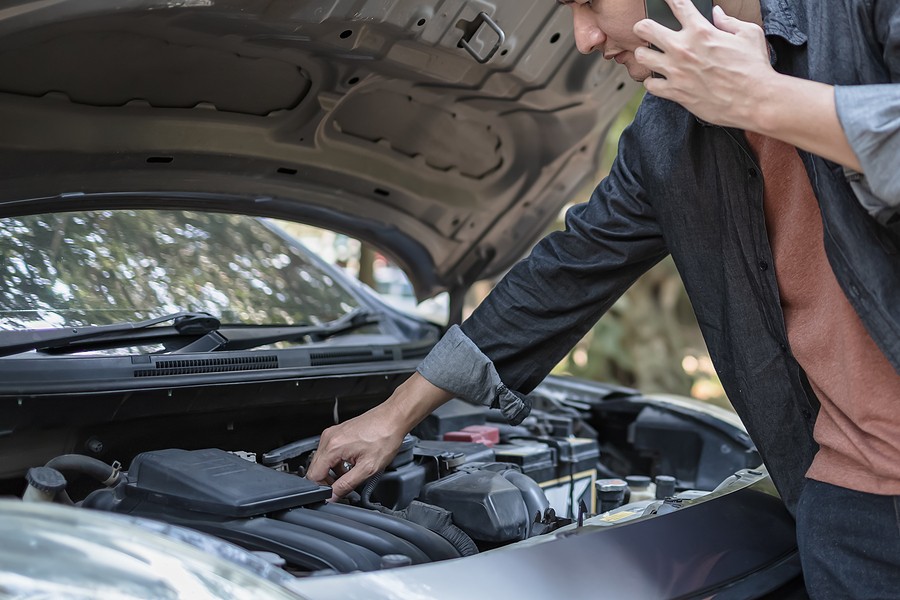
How to replace your water pump?
Even though it's a fairly simple task, replacing a faulty water pump is a job that should be left to a professional mechanic.
It normally takes under an hour for a skilled mechanic to remove and replace the faulty pump, so there is no reason not to have it done as soon as you notice any of the signs listed above.
If you attempt to do it yourself, not only could it result in significant engine damage – but the belt could also slip off and fly into other parts of your car!
If you feel ready to replace it yourself, you can follow these steps:
- Make sure your car is completely cool and turn off the engine
- Open the hood and disconnect any hoses and clamps connected to the radiator, water pump, or coolant tank.
- On some cars, you may need to remove the belt from the pulley system before draining all of the old coolants from the radiator.
- Next, you'll need to remove some screws and bolts that hold the water pump in place – some may require a ratchet wrench, while others will need a flat head screwdriver.
- Once you've removed all of the screws and bolts, lift out the old water pump and replace it with a new pump.
- Reattach the hoses and clamps you removed before, check for any leaks around the water pump, and then fill your radiator with fresh coolant.
- Finally, start up your car's engine and make sure all components are working correctly!
- If you don't notice any problems under the hood, you should be good to go – enjoy your newly fixed car!
If you are still unsure about how to replace your water pump or if you notice any of the signs listed above, take it to a mechanic right away.
An expert mechanic will have all of the parts needed for this job on hand and can do it quickly and easily!
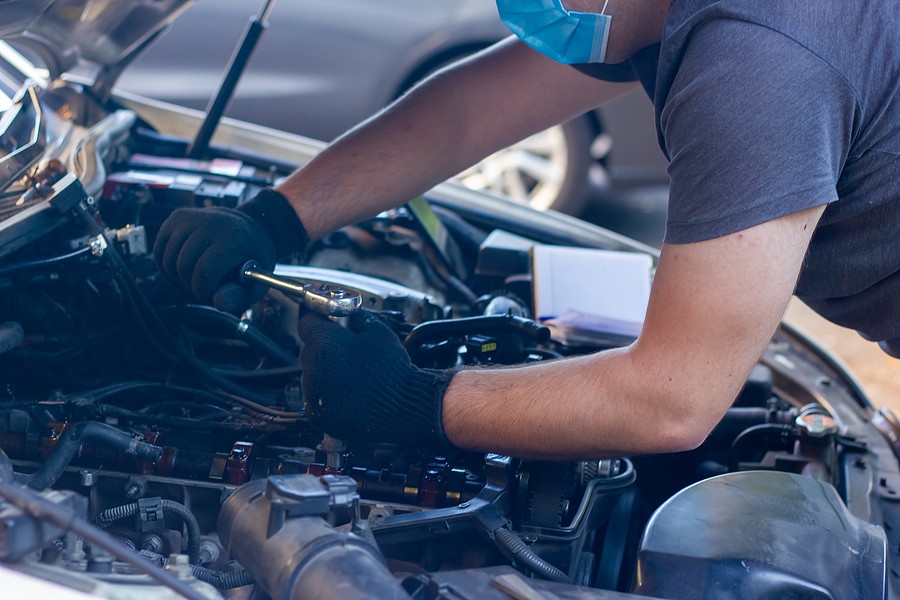
When should you replace your water pump?
Water pumps are relatively durable components.
They can last anywhere from 80,000 to over 200,000 miles before needing replacement – but if you notice any of the warning signs listed above, it's time for a new one.
What causes the water pump to go bad?
Some culprit is causing the water pump to fail prematurely, including:
here are the common causes for water pump failure:
Loose or worn belts
One of the most common reasons for a water pump to fail is a loose belt.
Belts stretch over time, so they need to be checked regularly.
If you notice any loose belts, get them fixed right away!
Other things that can stretch the belt are air conditioner components and alternators – but these parts aren't typically serviced until they fail.
If your belts seem worn out – get them replaced or fixed before it's too late!
Overheating the engine
Another common cause of water pump failure is overheating.
If you're letting your car idle for extended periods – even in cold weather, this can damage the water pump and drastically shorten its lifespan. So it's best to turn off your engine if you're going to be sitting somewhere – even if the weather is cold.
Leaks around the water pump
If you notice any leaks around your water pump, it's time to get it replaced! One of the most common reasons for a leak is rust or corrosion that builds up over time – but this can be prevented by flushing your cooling system every two years.
If you notice any leaks, take it in right away and save yourself the headache of having to replace your water pump – or worse.
constant stopping and starting
Another reason water pumps tend to go bad is constant starts and stops.
If you only drive short distances and stop frequently, this can stress the pump – especially if there is a leak or other problem.
For optimal performance, it's best to drive long distances at least once or twice per week.
It's also important to keep an eye out for leaks while driving if your water pump needs to be replaced.

Tips for keeping your car's cooling system in good condition
Although the water pump will fail one day once it reaches the end of its lifetime, there are some tips you can implement to extend the life span of the water pump, including:
follow these tips to extend the water pump:
- Pump your coolant every year or two
When you do a tune-up, make sure to check the condition of the radiator and water pump to prevent an early failure.
- Don't drive your car when the temperature is below 40°F
It's not good for your engine, and it could also damage the water pump.
- Don't let your engine idle for too long after it has been turned off
Let your engine rest for a few minutes before turning it off to avoid overheating.
- Don't let your car sit in the same place for too long
When you park, ensure that there is some airflow into the engine bay and that no parts are obstructed – this will keep the water pump working correctly if it's in an optimal position.
- Change your oil every 3,000 to 7,000 miles.
This will prevent any gunk from building up around the water pump and radiator.
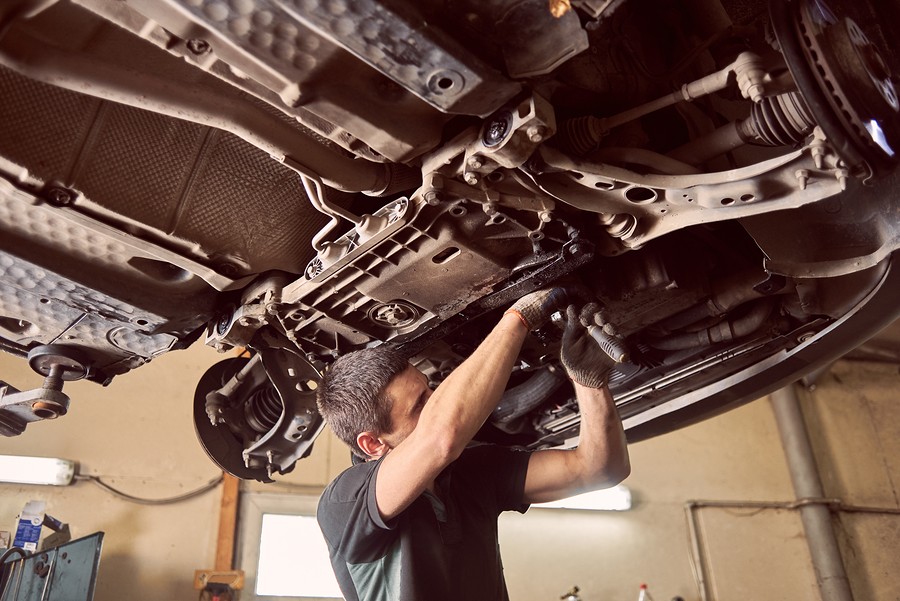
Signs of a faulty water pump FAQs
This section answers the most frequently asked questions about a faulty water pump.
Can a water pump be bad and not leak?
Yes, a water pump can be bad without leaking.
When the water pump begins to wear out, it should cause some obvious signs that are listed above – however, if that doesn't happen for whatever reason, you may not know until it starts causing problems elsewhere in your car.
How do I know if my car water pump is working?
You will notice a loss of coolant due to a leaking pump – however, if your car is not leaking, your water pump isn't working.
What does a noisy water pump sound like?
A water pump with a bad bearing or is about to fail will create a loud rattling noise.
Is it necessary to replace the timing belt when the water pump is replaced?
It depends on your make and model.
However, if you go to a mechanic for a timing belt replacement, they will replace the water pump simultaneously.
What is a failed water pump?
A failed water pump is when your car's water pump stops working.
It can be a minor or major failure depending on why the water pump is not working correctly.
How many hours does it take to replace a water pump?
It takes an experienced mechanic around 1-2 hours to replace a water pump.
When replacing a water pump, What else should you replace?
It's unnecessary to replace anything else; however, you should check your belts and hoses as replacing these parts simultaneously as your water pump is less expensive than if they fail later on.
Will a bad water pump cause a check engine light?
Yes, faulty water pumps can cause a check engine light depending on the water pump's failure.
What happens when the water pump goes out while driving?
You will notice your car starting to overheat, or it may even cut out completely.
If this happens while driving, pull over and allow the engine to cool before turning it back on again.
How long can you drive with a bad water pump?
You shouldn't drive your car if you've noticed any signs of a faulty water pump.
Allow the car to sit for at least 30 minutes to an hour before driving it again.
How long should you idle the car after replacing the water pump?
You shouldn't need to idle the car for very long.
If you have to drive your car within an hour after replacing the water pump, then allow it to idle for around 5 minutes before driving off.
How long will a water pump last after it starts leaking?
Water pumps typically last around 70,000 miles before they start to leak. However, you should replace it as soon as you notice a leak.
What error code does a faulty water pump trigger?
A faulty water pump will trigger error code P0087. This code can be read by a mechanic using an OBD2 scanner.
What does it mean when the water pump is spinning but not pumping?
It means that your car's water pump bearings have been worn out and that it needs to be replaced.
Conclusion
If you're noticing any of the signs of a faulty water pump, it's important to take your car in for a diagnosis and repair as soon as possible. A water pump that is not working correctly can cause extensive damage to your engine, so it's best to nip any problems in the bud.
In this article, we've outlined some of the most common signs that indicate a water pump needs replacement. We've also answered some FAQs about water pumps and what to do if they start failing.

